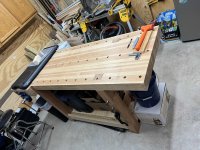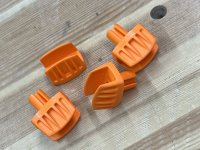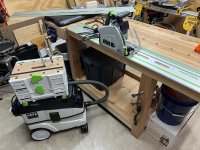New to the forum and to Festool...after dreaming about one for a long time, I am finally getting a Festool track saw and dust vac. I am a hobbyist with a small shop, dominated by my workbench in the center. My bench has dog holes and I have a handful of the Veritas work holders. I'm assuming that I can set up cuts on 1x rails right on the bench top? Apologies if this has been covered---I tried to do a search and had trouble finding information that wasn't centered on the MFT system. Thanks,
Chris
Chris




